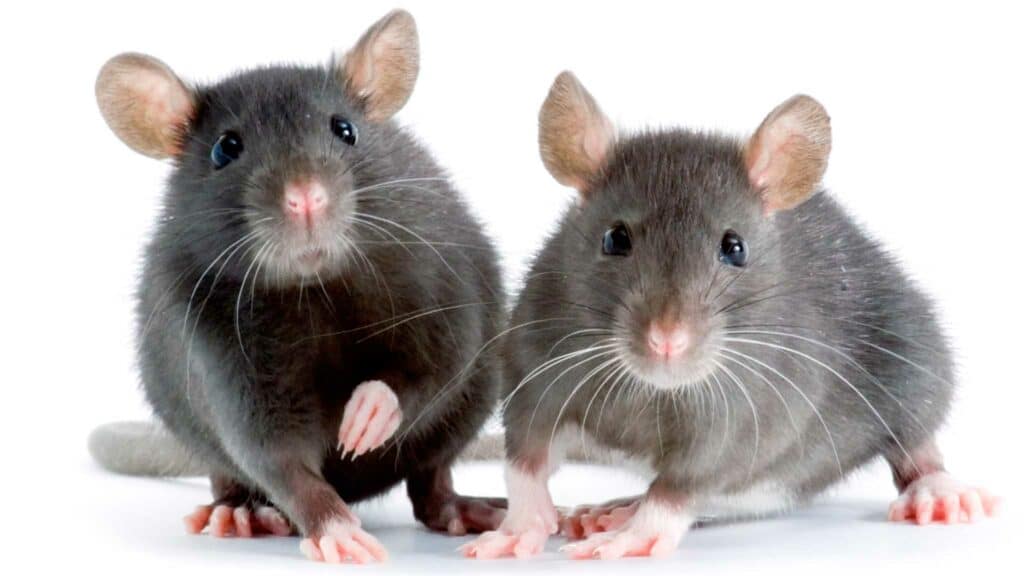By Dr Caraleigh Stander, CS Vet
One aspect that all farmers in every agricultural industry struggle with is pest control. It is not unique to one or two piggeries, but it is certainly a universal problem that does not have a simple solution by any means. Pests contribute to poor health and welfare for pigs and staff, increased maintenance costs, veterinary and feed costs, feed spoilage and wastage, decreased food conversion rate (FCR), average daily gain (ADG) and slaughter weights and add to infertility in sows.
The intensive nature of pig farming in combination with climate change make it easier for pests to over-winter, thus they are not dying off or migrating in the colder months. The constant availability of feed, shelter and waste available in a piggery provide the ideal environment for pests to proliferate.
The two most common and difficult to manage pests are rodents and flies.
Rodents
Studies done by the United States Department of Agriculture (USDA) indicate that 20% of farm fires are linked to damaged electrical components, particularly where rodents are residents. Rodents also carry or transmit an enormous amount of diseases, including Leptospirosis (sow infertility), Salmonellosis (diarrhoea), Toxoplasmosis (infertility in sows and humans), Yersinia enterocolitica, E. coli, and Lawsonia (diarrhoea).
Rodents have an exceptional potential to breed. The offspring of just one female rat can amount to 2 000 in one year, making control of the pest a constant battle. The optimal control strategy in combating a rodent infestation would include knowledge of their behaviour, population dynamics, feeding habits, the use of traps, closing entry ways such as drains, baiting in their preferred paths, maintaining infrastructure and clearing any unnecessary items or waste that may give the rodents reason to stay. Lastly, in combination with the previously mentioned control measures, is the use of rodenticides.
There are two main groups of rodenticides used on piggeries: Anti-coagulants (for example warfarin, to which some rats have developed resistance) and hypercalcaemia inducing agents (Vitamin D/cholecalciferol).
Social learning plays a large role in the bait preferences of rats; young rats will eat what the adult rats eat and will also avoid food that has made adult rats ill. This makes placing bait continuously challenging. The presence of metapopulations of rodents at the perimeter of the resident rodents is also one of the reasons that there is a population boom when it appears that the pest problem has just died off.
Flies
Manure is part and parcel of pig farming, but with it comes the uninvited guests: flies. These pests are known to carry over 100 diseases that can be transmitted to both pigs and humans, amongst which are E. coli, Salmonella, Shigella, Mycobacterium avium/TB, Yersinia enterocolitica, ASF, CSF and Streptococcus suis. Flies spread the disease mechanically by sticky hair on their legs and feet or by regurgitation of their crop fluid. The transmission of disease becomes even more of a risk as flies have been recorded to fly over 1.5 km.
Disease is not the only reason why there is a constant war against flies. They are an irritation to both staff and pigs and can cause weight loss in pigs from nuisance during feeding times. Biting flies, Stomoxys calcitrans, suck the blood of animals and humans, which is painful and can contribute to disease spread. Flies also cause myiasis – this is the process where maggots penetrate the wound, liquefies the tissue and extend the lesion. Therefore, wounds need to be treated and dried as soon as possible. This means that decisions need to be made regarding rectal prolapses as soon as they arise.
The most common fly on a piggery is the house fly, Musca domestica. It has one pair of wings, reddish eyes, is approximately 6 mm long (mature adult), has four dark stripes on the thorax and has yellowish sides. The fly has sponging mouthparts to feed on liquid food (as is, or by making wet food by saliva or regurgitation), with decaying matter and faeces being a firm favourite.
The lifecycle of the adult is 15 to 30 days. Males can mate on the first day after becoming a mature fly and the female is able to do so on the third day. She will lay four to six hatches of 75 to 150 eggs each which hatch after 24 hours. The larval stages (maggots), live for a week before they pupate after which the pupa changes into a fly after five days. The warmer the climate the faster this cycle will take place.
As for rodent control, fly management needs to be an integrated system. Taking the various life stages of the fly into consideration, it is highly recommended to target both adult flies and the larvae in order to get ahead of the pest war.
The options for control may include:
Physical control
• Fly screens.
• Self-closing doors.
• Electrocuting lights.
• Sticky traps, bags (dust, counterproductive).
• Removal of waste, covered bins.
• Managing flush channels – as they have no water at the start, they are a high risk for fly infestation.
Deep pit systems need to be managed as well – be aware of spots where crusts from: under feeders, corners, areas not near drinkers. Inspect and stir or break dry patches weekly. Pull the right plugs at the right times.
Chemical control
• Insect growth regulators – Cyromazine, Diflubenzuron. These chemicals inhibit exoskeleton development and the transition of the larvae through the pupal stage.
• Neonicotinoids – Affect adult flies. The chemical has a lower mammalian toxicity. It has a rapid onset of action, but the breakdown products may affect honeybees.
Whatever the pest control strategy on a farm entails, the key to managing the pests is consistency. It is advisable to have a person who is dedicated to pest control (part or even full time on larger farms).
References
• Straw, B. (2006). Diseases of swine. Ames, I: Blackwell Publishing.
• The Pig Site. (2018). Rodent Control on Farms. [online] Available at: http://www.thepigsite.com/articles/4911/rodent-control-on-farms/ [Accessed 29 Oct. 2018].
• Sciencedirect.com. (2018). Rodenticide – an overview | ScienceDirect Topics. [online] Available at: https://www.sciencedirect.com/topics/agricultural-and-biological-sciences/rodenticide [Accessed 29 Oct. 2018].
• Waheed Iqbal (2014) ‘Role of housefly (Musca domestica, Diptera; Muscidae) as a disease vector; a review’, Journal of Entomology and Zoology Studies, 2(2), pp. 159-163 [Online]. Available at: http://www.entomoljournal.com/vol2Issue2/pdf/33.1.pdf(Accessed: 25 October 2018).
• Akande, O. (2008). A Study on Wild rat Behaviour and Control on a Pig farm. MSc Veterinary Medicine. Swedish University of Agricultural Sciences.
Clemson University – USDA Cooperative Extension Slide Series (2018). house fly (Musca domestica). Multiple Life Stages. [image] Available at: https://www.invasive.org/browse/detail.cfm?imgnum=1435183 [Accessed 7 Nov. 2018].
Aaanimalcontrol.com. (2018). Do rats chew on wires? Why? [online] Available at: http://www.aaanimalcontrol.com/Professional-Trapper/ratchewwire.html [Accessed 7 Nov. 2018].
The South African Pork Producers’ Organisation (SAPPO) coordinates industry interventions and collaboratively manages risks in the value chain to enable the sustainability and profitability of pork producers in South Africa.









